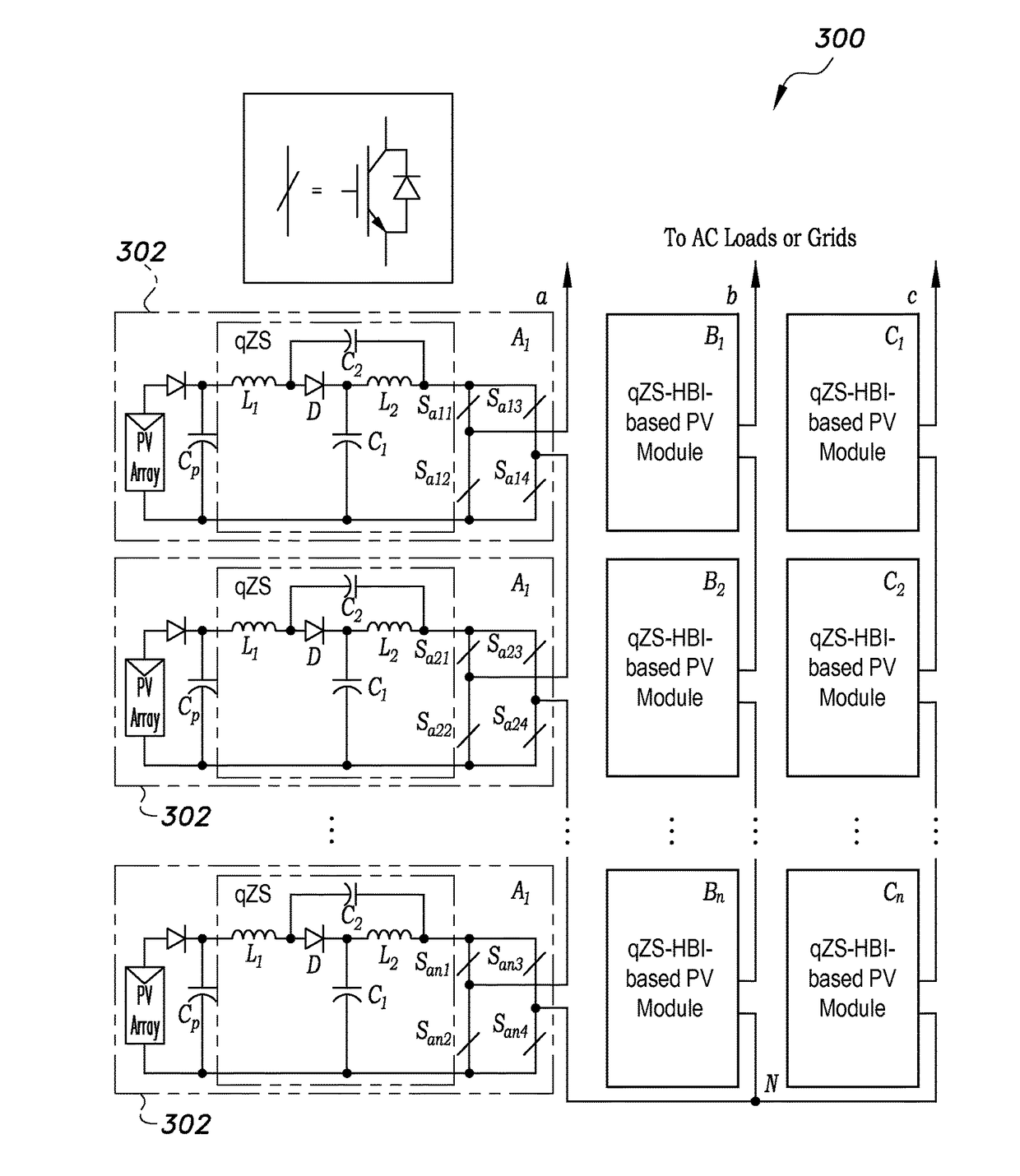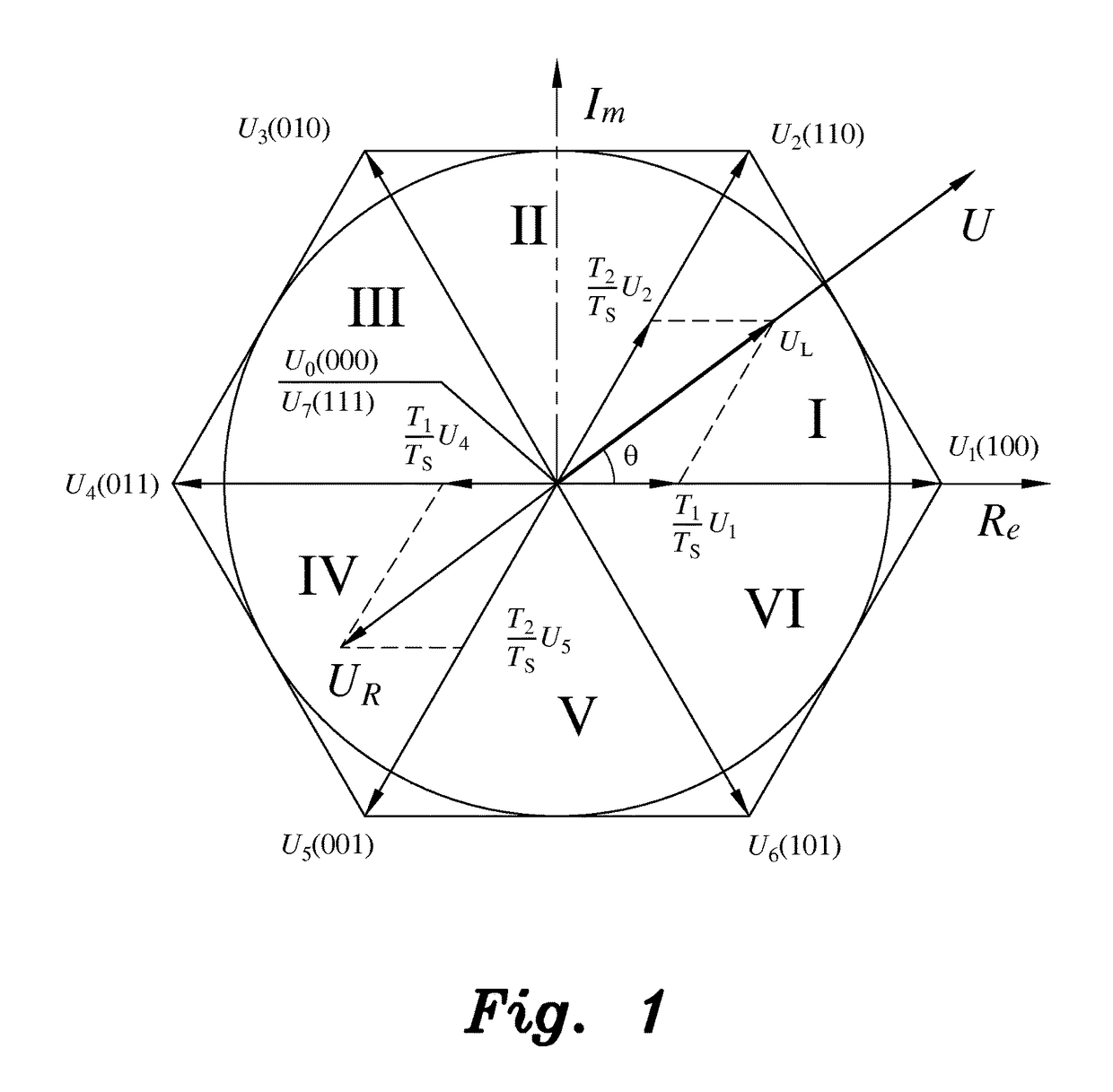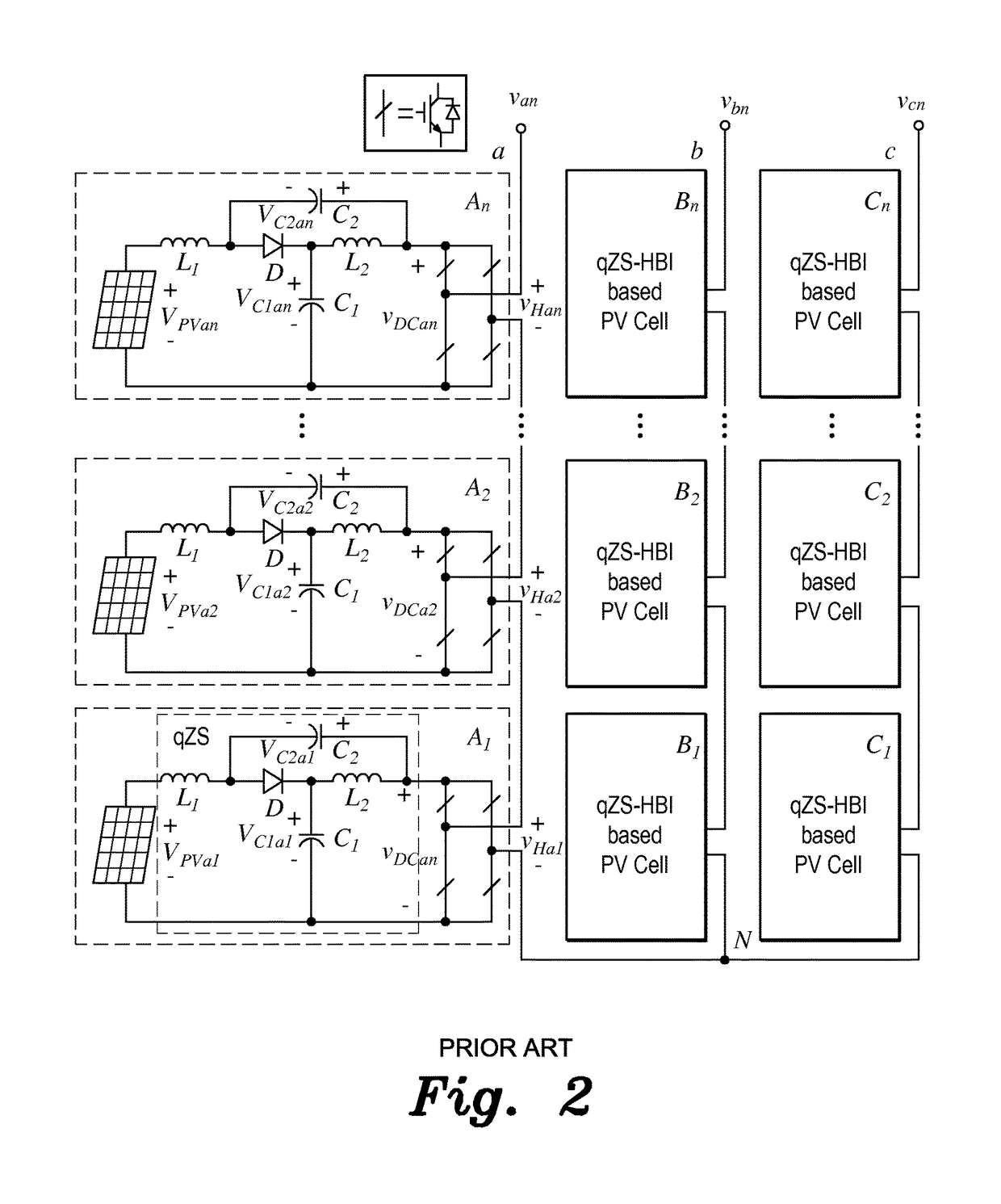Modulation and control methods for quasi-z-source cascade multilevel inverters
a multi-level, cascade technology, applied in the direction of dc-ac conversion without reversal, efficient power electronics conversion, climate sustainability, etc., can solve the problems of large impact on the output power of pv panels, low efficiency of commercial photovoltaic panels, and high cost of pv panels, so as to reduce power loss, reduce switching loss, and increase voltage utilization
- Summary
- Abstract
- Description
- Claims
- Application Information
AI Technical Summary
Benefits of technology
Problems solved by technology
Method used
Image
Examples
first embodiment
[0047]the control and modulation methods for quasi-Z-source cascade multilevel inverters relates to a modular multilevel space vector modulation (SVM) method for a photovoltaic (PV) quasi-Z-source cascade multilevel inverter (qZS-CMLI).
[0048]Prior to developing the modular multilevel space vector modulation method for a photovoltaic quasi-Z-source cascade multilevel inverter, a single layer quasi-Z-source cascade multilevel inverter (qZS-CMLI) is examined, such as, for example, the first layer of the n-layer qZS-CMLI of FIG. 2. For this first layer, the six bridges can be divided into two groups: left bridges La, Lb and Lc, and right bridges Ra, Rb and Rc. Each group is separately controlled by a three-phase two-level space vector modulation (SVM), thus two space vectors can be generated; i.e., left bridge vector UL and right bridge vector UR, as shown in FIG. 1. Concurrently, two groups of switching times are respectively generated; i.e., the left bridge switching times per phase T...
second embodiment
[0065]the control and modulation methods for quasi-Z-source cascade multilevel inverters relates to a pulse-width-amplitude modulation method for quasi-Z-source cascade multilevel inverters, which provides variable carrier amplitude for a three-phase voltage source inverter, or so-called pulse-width amplitude modulation (PWAM). A variable modulation signal or carrier is provided, such that the ratio Vm / Vc is variable, thus the term pulse-width-amplitude modulation (PWAM) is used.
[0066]One fundamental period of the modulation wave can be divided into six sectors. In each specific sector, only one phase is doing switching, while any of the other two phases remains at a constant state of “0” or “1”. With the present PWAM, the inverter not only reduces the equivalent switching frequency but also switches at a much lower voltage and current stresses. The result is that the total switching loss of the inverter can be reduced significantly.
[0067]The present PWAM method generates shoot-thro...
third embodiment
[0099]the modulation methods for quasi-Z-source cascade multilevel inverters relates to a grid-connected control method for quasi-Z-source cascade multilevel inverter-based photovoltaic power generation for extracting maximum power from each Z-source cascade multilevel inverter. The grid-connected control method for quasi-Z-source cascade multilevel inverter-based photovoltaic power generation embeds the quasi-Z-source impedance network between the DC source and the inverter for each H-bridge module of the traditional cascade multilevel inverter (CMI). In this way, it provides the merits of both the traditional CMI and the quasi-Z-source inverter (qZSI), such as high-quality step-like output voltage waveforms with lower harmonic distortions, lower requirement of power semiconductors, modular topology, and most important of all, independent DC-link voltage boost through the single-stage power conversion of the quasi-Z-source network.
[0100]The method includes closed-loop shoot-through...
PUM
 Login to View More
Login to View More Abstract
Description
Claims
Application Information
 Login to View More
Login to View More - R&D
- Intellectual Property
- Life Sciences
- Materials
- Tech Scout
- Unparalleled Data Quality
- Higher Quality Content
- 60% Fewer Hallucinations
Browse by: Latest US Patents, China's latest patents, Technical Efficacy Thesaurus, Application Domain, Technology Topic, Popular Technical Reports.
© 2025 PatSnap. All rights reserved.Legal|Privacy policy|Modern Slavery Act Transparency Statement|Sitemap|About US| Contact US: help@patsnap.com



